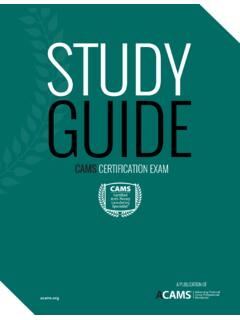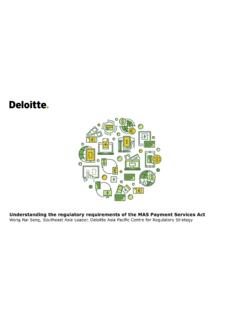Transcription of Channel Duty Guidance - GOV.UK
1 Channel duty Guidance :Protecting people vulnerable to being drawn into terrorismChannel duty Guidance : Protecting people vulnerable to being drawn into terrorism Statutory Guidance for Channel panel members and partners of local panels Crown copyright 2020 This publication is licensed under the terms of the Open Government Licence except where otherwise stated. To view this licence, visit we have identified any third party copyright information you will need to obtain permission from the copyright holders publication is available at Office Press Office Telephone: 020 7035 3535 ISBN: 978-1-5286-2102-1 CCS0720814876 Printed on paper containing 75% recycled fibre content minimumPrinted in the UK by APS Group on behalf of the Controller of Her Majesty s Stationery OfficeChannel duty Guidance 3 Contents1.
2 Prevent 52. Channel 7 Monitoring Channel duty compliance3. Channel panels and partners of a panel 10 Requirements for panelsDetermining the lead authority for ChannelCombined panelsGovernance4. Channel panel roles 14 The police counter- terrorism case officer and Channel coordinatorThe local authority chair Panel members5. Channel process 18 Identifying individuals vulnerable to risk of radicalisation Referral stageScreening and information gathering stage Pathway DiagramCooperation by partners of a panel Information sharing Disclosure and confidentialityVulnerability assessment frameworkLinks with extremist groups Transferring Channel casesChannel, targeted support and offender management Prisons Multi-Agency Public Protection Arrangements Desistance and Disengagement Police-led partnerships Police investigations Probation and youth offending6.
3 The Channel Panel 30 Panel meetings Support plans RiskConsent for supportCapacity to provide consent adults, children and young peopleSupport to address identified vulnerabilities Monitoring Channel support Accessing specialist support Intervention Providers (IPs) Intervention Support Fund Vulnerability support hubs Immigration enforcement Onward referrals to alternative forms of support Reviewing Channel cases Exit reviewsSharing good practice 7. Training 408. Information requests 42 Freedom of Information Act requests Subject access requests Enquiries 9.
4 Safeguarding 44 Annex A Sharing information with partners10. Annexes 46 Annex B Partners required to cooperate with local panelsAnnex C Vulnerability assessment frameworkAnnex D Other relevant guidanceChannel duty Guidance 4 Guidance for members of a panel and partners of local panels in England and Wales on the duty in the Counter- terrorism and Security Act 2015 to provide support for people vulnerable to being drawn into and scope of the duty1. This Guidance has been issued under sections 36(7) and 38(6) of the Counter- terrorism and Security Act 2015 (the CT&S Act) to support panel members and partners of local panels; panel members and partners of local panels must have regard to this Guidance .
5 The Counter- terrorism and Border Security Act 2019 provides an additional provision relating to Section 36 of the CT&S Act sets out the duty on local authorities and partners of local panels to provide support for people vulnerable to being drawn into terrorism . In England and Wales, this duty is met through Channel panels. For the purpose of this Guidance , the term Channel refers to the local authority-led support and the duty as set out in the CT&S Act. Separate Guidance is in place to cover This Guidance is specifically aimed at members and partners of local panels involved in the Channel process.
6 The list of partners of local panels subject to the provision can be found in Schedule 7 of the CT&S Act (also replicated in Annex B of this Guidance ). As a designated statutory duty , the requirements of Channel should be reflected in relevant local policy, Guidance and the local authority s The purpose of this document is to: provide Guidance for Channel panels provide Guidance for panel partners on Channel delivery (that is, those authorities listed in Schedule 7 to the CT&S Act who are required to co-operate with Channel panels and the police in the carrying out of their respective functions under section 36 of the CT&S Act the list is also replicated in Annex B of this Guidance )
7 Explain why people may be vulnerable to being drawn into terrorism and describe indicators that suggest this provide Guidance on the support that can be provided to safeguard those at risk of being drawn into terrorism explain how a Prevent referral is assessed to determine suitability for support through ChannelChannel duty Guidance 5 Section 1:Prevent5. The aim of Prevent is to reduce the threat to the UK from terrorism by stopping people becoming terrorists or supporting terrorism . Delivery of Prevent is grounded in early intervention and Prevent addresses all forms of terrorism and we continue to prioritise according to the threat posed to our national security.
8 The allocation of resources will be proportionate to the threats we face. The most significant of these threats is currently from terrorist organisations associated with Al Qa ida, Daesh, terrorists associated with extreme right-wing ideologies and lone actors inspired by such This list is not exhaustive. Risk and threat to the UK is subject to constant review and updated accordingly. 7. Prevent has three objectives in CONTEST: tackle the causes of radicalisation and respond to the ideological challenge of terrorism safeguard and support those most at risk of radicalisation through early intervention, identifying them and offering support enable those who have already engaged in terrorism to disengage and rehabilitate8.
9 The UK Government remains absolutely committed to protecting freedom of speech. But preventing terrorism will mean challenging extremist (and non-violent) ideas that are also part of a terrorist ideology, including instances of unclear, mixed or unstable ideology. Prevent also facilitates interventions to stop people moving from extremist activity to terrorist-related The Counter-Extremism Strategy defines extremism as the vocal or active opposition to our fundamental values, including democracy, the rule of law, individual liberty, and respect and tolerance for different faiths and beliefs.
10 We also regard calls for the death of members of our armed forces as extremist. 22 duty Guidance 610. Section 26 of the CT&S Act places a duty on certain bodies in the exercise of their functions to have due regard to the need to prevent people from being drawn into terrorism . Separate Guidance has been issued on the Prevent Channel forms a key part of Prevent. The process adopts a multi-agency approach to identify and provide support to individuals who are at risk of being drawn into terrorism . There is no fixed profile of a terrorist, so there is no defined threshold to determine whether an individual is at risk of being drawn into terrorism .














